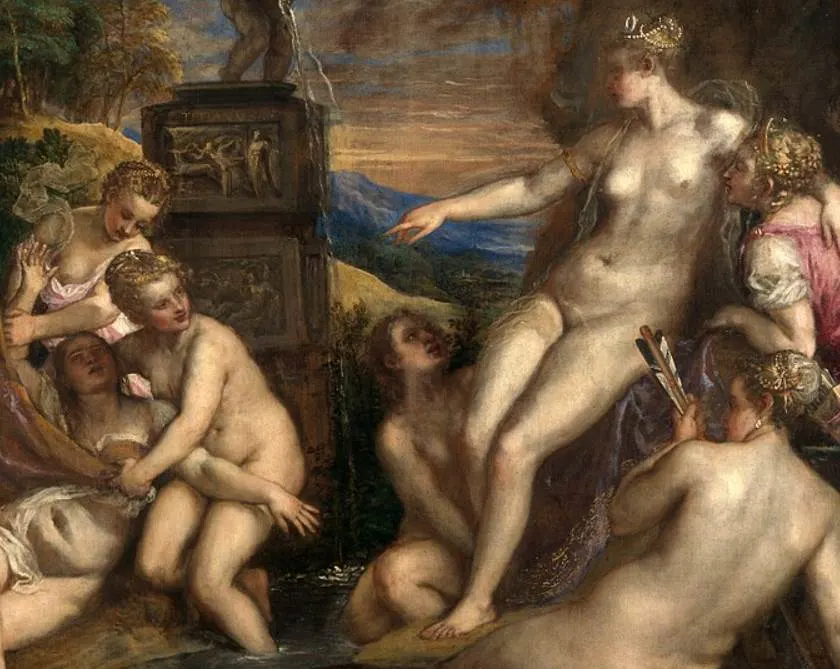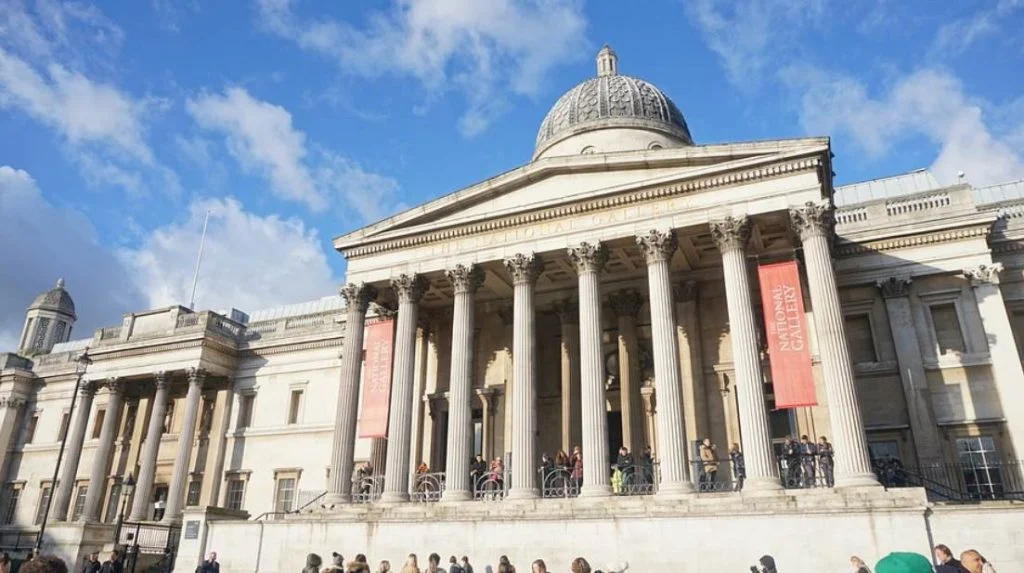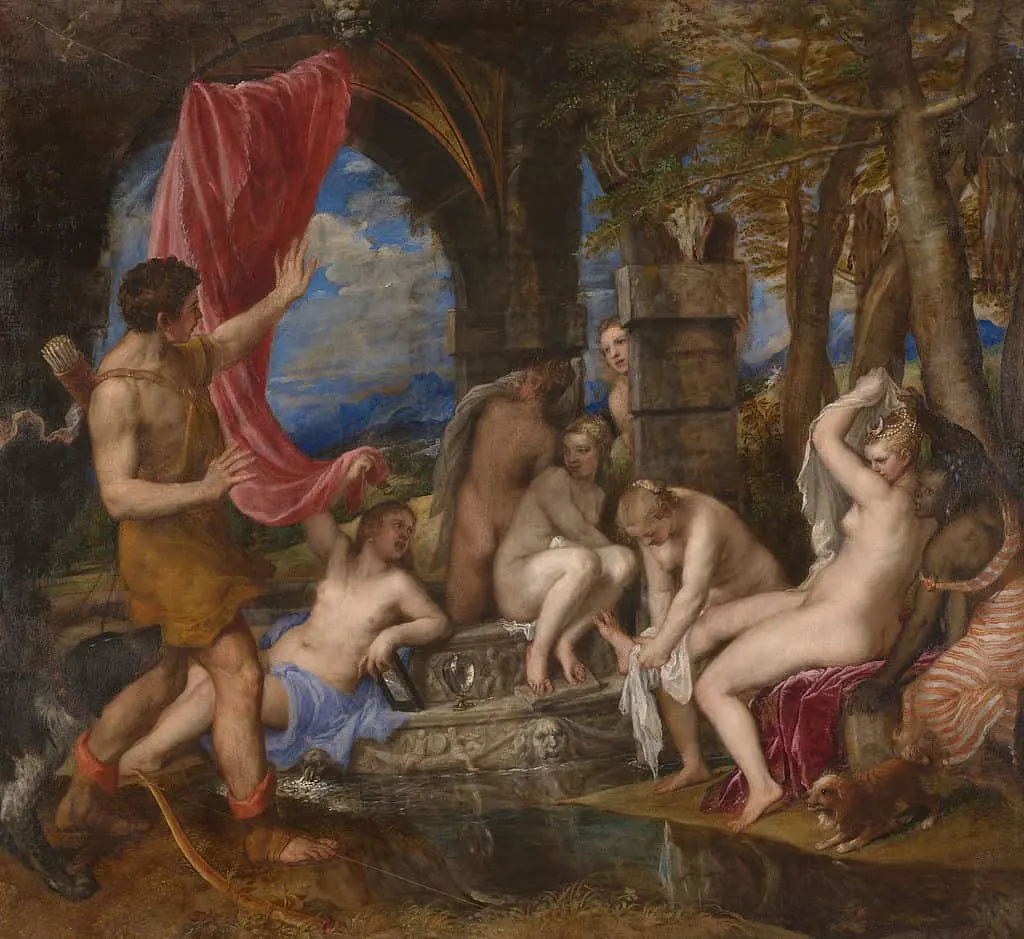Italian artist of the Renaissance Tiziano Vecelli (1488-1576), better known as “Titian,” offered to paint a series of paintings for a notorious king in the 16th century. Even though his initial offer was rejected, another king agreed for him to complete the series.
One of these remarkable works in the oeuvre of Titian depicts a shocking moment in a mythical story. Let’s take a closer look at some of the most interesting facts about Diana and Callisto by Titian, a painting with a remarkable history.
1. The painting was completed in the late 1550s
Titian was a painter of the Venetian School and one of the most influential painters of the 16th century. He was the undisputed master in Venice for multiple decades until younger rivals such as Paolo Veronese and Tintoretto came onto the scene, a duo that completes the 3 Venetian masters of the 16th century.
He was born in either 1488 or 1490 (the exact date is unknown) which means that he was approaching his seventies while he painted Diana and Callisto. He completed this work somewhere between 1556 and 1559.
He already reached maturity a long time before this and even created some of his best-known masterpieces such as “Sacred and Profane Love” (1514) and “The Assumption of the Virgin” (1516-1518) about 4 decades earlier.

2. It’s one in a series of 7 mythological paintings
The story about the painting is that it’s a part of a series consisting of 7 mythological paintings based on “Metamorphoses,” a work by the Roman poet Ovid. Titian offered to paint these for Maximilian II, Holy Roman Emperor, but for some reason, he declined the offer.
The artist then switched his attention to another great ruler in Western Europe at the time, King Philip II of Spain. Being a patron of the arts who initiated the Spanish Golden Age, he accepted the offer. Titian completed the 7 paintings and 6 were delivered during the 1550s.
Only “The Death of Actaeon,” a sequel to another work in the series called “Diana and Actaeon,” was never delivered.
3. It depicts an unpleasant moment between Diana and her maid
Ovid’s Metamorphoses is the ultimate work of the Roman poet who lived during the reign of Emperor Augustus, the first emperor of the Roman Empire. It was published in 8 A.D. and featured 15 books and 250 myths.

Diana and Callisto is a painting that depicts a rather awkward moment in which Diana finds out that her maid Callisto had become pregnant by Jupiter.
Jupiter was the ultimate deity in ancient Rome as he was considered to be the king of all gods. This notion makes it extremely weird for the goddess Diana that one of her maids became pregnant by him, which is emphasized by her demeanor towards the nymph.

4. It was part of the Spanish royal collection until the early 18th century
The painting was delivered to King Philip II of Spain somewhere in the late 1550s and it remained in the royal Spanish collection until the year 1704. King Philip V didn’t appreciate the work as much as his predecessors as he simply gave it away to the French ambassador to Spain in that year.
The painting was brought back to France and was quickly bought by Philippe II, Duke of Orléans, the nephew of King Louis XIV. The painting remained in the Orléans collection until the turmoil of the French Revolution started in the late 18th century.
Louis Philippe II, Duke of Orléans, sold it in Brussels in 1791, just 2 years before he got his head chopped off by the guillotine at the Place de la Concorde in Paris. From Brussels, it eventually made its way to Great Britain.
5. It’s one of two paintings that was acquired for hefty sums
The painting was sold in an auction together with Diana and Actaeon and was acquired by a rich coal-magnate named Francis Egerton, 3rd Duke of Bridgewater. The paintings were on public display at the Bridgewater House in London until they were moved to Scotland at the start of World War II.
During the early 2000s, the painting had passed on to Francis Egerton, 7th Duke of Sutherland. He was the man who decided to sell the paintings, mainly because they represented most of his wealth, and diversifying is not a bad idea after all.
Diana and Actaeon was the first painting to be jointly acquired by the National Gallery, London, and Scottish National Gallery for an astounding amount of £50 million in 2009. Diana and Callisto was sold to the same two museums for an equally impressive amount of £45 million in March 2012.

More interesting facts about Diana and Callisto by Titian
6. Just like the other 7 paintings in this series by Titian, it’s a relatively large work of art. It’s not of a monumental scale like some of his other works, though, as it has dimensions of 187 × 204.5 centimeters (74 × 80.5 inches).
7. The adjoining painting, Diana and Actaeon, has dimensions of 185 × 202 centimeters (73 × 80 inches). Both works are displayed at the National Gallery in London and the National Galleries of Scotland on an alternating basis.
8. Raising the money to acquire the paintings wasn’t an easy job and received quite a bit of criticism. After all, spending £95 million on two paintings could be considered as wasted money.
Both museums combined forces and the National Gallery in London raised a bit more money. That’s why the display time will be on a 60:40 basis in favor of the museum in London based on their monetary contribution.

9. The paintings have been praised by countless other artists while they were on display in the United Kingdom. Some of the critics included renowned artists such as JMW Turner (1775-1851) and his colleague Lucian Freud (1922-2011).
Freud even commented on the works as being “simply the most beautiful pictures in the world.” He also mentioned that “Titian does amazingly what is one of the most difficult things of all to do, which is to paint people together. In a bad painting, the figures may be side by side, but are like butterflies in a book – there is no sense that they are touching.”
10. The original version of the painting is the one owned by the two museums in the UK. There is, however, another version that was completed at a later date by Titian and his workshop.
The underdrawing of both paintings is pretty much identical, so only slight alterations to the figures were made. This version is located in the Kunsthistorisches Museum in Vienna.

